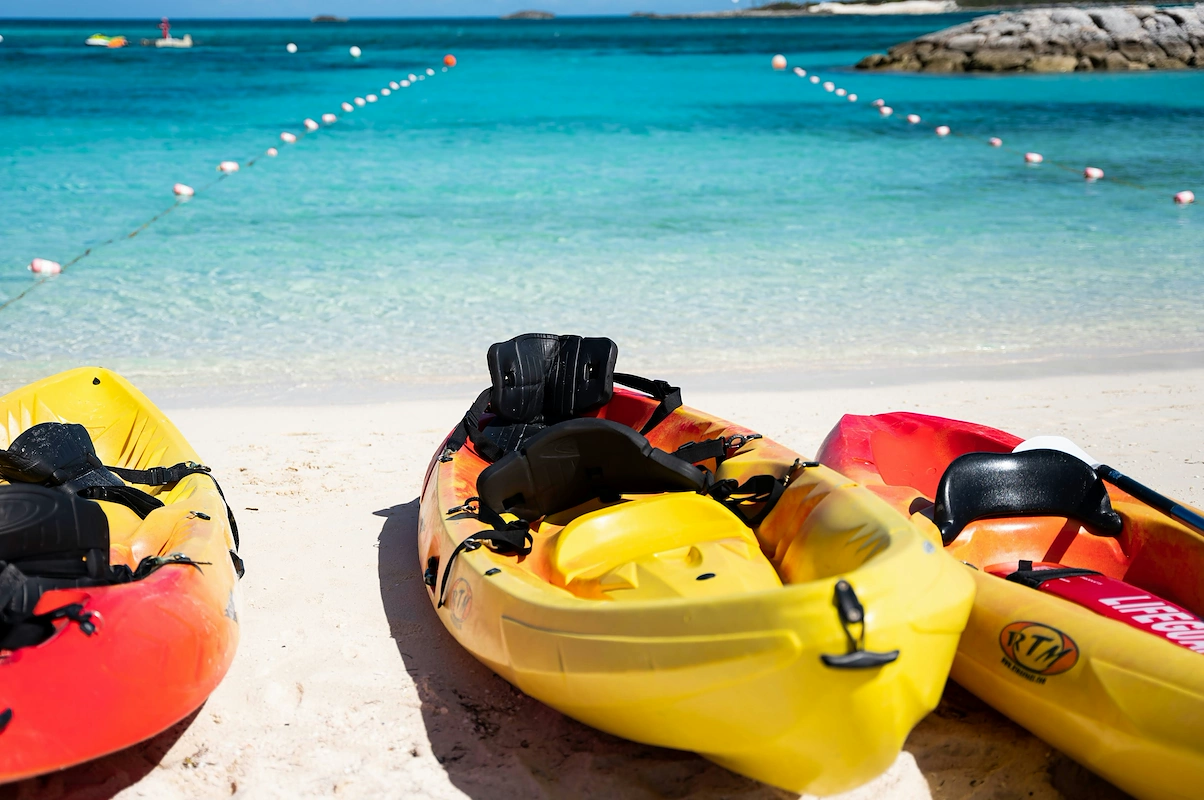Starting an entertainment company is a rewarding venture that blends creativity and production know-how with sharp business savvy. The global entertainment market is a multi-billion dollar industry, with steady demand for captivating experiences from corporate events to private parties and public festivals.
This guide will take you through the practical steps of validating your business concept, securing funding, obtaining the right permits, and building your brand to help you launch a successful entertainment company in the U.S.
Step 1: Validate your business idea and create a plan
Before you invest, confirm there is a demand for your specific entertainment concept. You could attend local festivals or corporate mixers to observe what works. Also, consider short surveys for potential clients like wedding planners or HR managers to gauge interest in your services.
With this in mind, look at your competition. Platforms like GigSalad and The Knot are great for seeing the rates and packages other entertainment companies offer. A common mistake is trying to serve everyone; instead, find a niche, like high-tech corporate events, where you can stand out.
Estimate your startup costs
Speaking of costs, your initial investment will largely depend on your niche. A simple DJ setup is much different from a full-band production. When you budget for these expenses upfront, you can set realistic financial goals and avoid surprises.
- Equipment: Sound systems, lighting, and specialty gear can range from $5,000 to $20,000.
- Insurance: General liability insurance is a must. Expect to pay between $500 and $2,000 per year.
- Business Formation & Licensing: This includes LLC registration and local permits, typically costing $100 to $500.
- Initial Marketing: A professional website and some local ads might run you $1,000 to $5,000.
This puts a typical startup budget in the $6,600 to $27,500 range. Remember to also account for equipment transport and maintenance, which are often overlooked.
Here are three immediate steps to take:
- Survey 10-15 potential clients in your target niche, such as corporate event coordinators.
- Build a spreadsheet to compare the services and pricing of 3-5 local competitors.
- Draft a preliminary budget that outlines your estimated costs for equipment, insurance, and marketing.
Step 2: Set up your legal structure and get licensed
Most new entertainment companies choose a Limited Liability Company (LLC). This structure protects your personal assets if the business faces a lawsuit. It also simplifies taxes by letting profits pass through to your personal tax return, avoiding double taxation that corporations can face.
Once your LLC is registered with the state, get an Employer Identification Number (EIN) from the IRS. It’s your business's social security number and is free to obtain online. You will need it to open a business bank account and hire any employees.
Now, focus on local requirements. Contact your city or county clerk for a general business license, which can cost between $50 and $150. For larger events, you may need a Special Event Permit, so plan for a 30-90 day application window.
A mistake many owners make is overlooking music rights. If you play recorded music, you need performance licenses from organizations like ASCAP and BMI. Their annual fees can range from a few hundred to several thousand dollars, but it prevents massive fines down the road.
Here are four immediate steps to take:
- Register your business as an LLC with your state's Secretary of State office.
- Apply for a free Employer Identification Number (EIN) on the IRS website.
- Contact your city clerk to ask about the process for a general business license.
- Look up the annual license fee calculators on the ASCAP and BMI websites.
Step 3: Secure your insurance and manage risk
Your first policy should be General Liability Insurance. This covers third-party injuries and property damage. Most venues require at least a $1 million policy. Expect annual premiums to fall between $500 and $2,000, depending on your services and location.
Key insurance policies to consider
Beyond general liability, you may need other coverage. These policies protect you from different kinds of financial loss.
- Professional Liability: This covers you if a client claims your service failed, like a sound system malfunction that ruins a wedding ceremony.
- Commercial Property: This protects your equipment from theft or damage when it is stored at your business location.
- Workers’ Compensation: If you hire employees, even part-time, most states require this to cover on-the-job injuries.
A mistake some owners make is to assume their property policy covers equipment on the move. You should ask your agent for an inland marine rider. It specifically protects your gear during transport to and from events, which is when damage often happens.
You might want to work with an insurance provider that understands the entertainment industry. General agents may not grasp your unique risks. Look into specialists like K&K Insurance, The Hartford, or Philadelphia Insurance Companies for more accurate coverage and better rates.
Here are three immediate steps to take:
- Request quotes for a $1 million general liability policy.
- Ask potential insurers about an inland marine policy to cover equipment in transit.
- Compare rates from at least two providers that specialize in entertainment, like K&K Insurance and The Hartford.
Step 4: Secure your space and gear up
You will need a place to store your equipment. A 100-200 square foot climate-controlled storage unit is a good start. This protects sensitive electronics from extreme temperatures. Look for facilities with 24/7 access so you can grab gear for late-night events.
When you look at leases, try to find a month-to-month option. This gives you flexibility as your inventory grows. Avoid long-term contracts at first. Make sure the facility's insurance requirements align with the policy you secured in the previous step.
Key equipment and costs
Your gear is your product. Many new owners overspend on brand-new equipment. Instead, check out used gear from reputable sellers on sites like Reverb.com, which can save you 30-50%. You can start with a core package and expand later.
- PA System (speakers, mixer): $2,000 - $7,000
- Microphones (2 wireless): $500 - $1,500
- Basic Lighting Rig: $1,000 - $4,000
- Cables, Stands, and Cases: $500 - $1,000
For new equipment, suppliers like Sweetwater and B&H Photo Video offer a wide selection without minimum orders. Their sales engineers can also help you match components for a complete system, which prevents compatibility issues.
Here are three immediate steps to take:
- Research local climate-controlled storage units for a 10x15 foot space.
- Create a spreadsheet to price a basic PA system on Sweetwater and B&H Photo Video.
- Browse used lighting packages on Reverb.com to compare costs against new gear.
Step 5: Set up your payment system
It is standard to require a 50% non-refundable deposit to secure a booking. The final balance is typically due on or before the day of the event. This protects your time and covers initial costs if a client cancels.
A mistake some owners make is to not outline these terms in their contracts. Always specify due dates for deposits and final payments to prevent misunderstandings and ensure you get paid on time.
How to accept payments
For entertainment companies that need to accept payments on-site, JIM offers a streamlined solution. While average rates from other providers often hover between 2.5% and 3.5% plus monthly fees, JIM is different.
With JIM, you accept debit, credit, and digital wallets directly through your smartphone—just tap and done. At just 1.99% per transaction with no hidden costs or extra hardware, it is particularly useful to collect final payments at a gig.
Here is how it works:
- Get Started: Download the JIM app for iOS.
- Make a Sale: Type the sales amount, hit sell, and ask your customer to tap their card or device on your phone.
- Access Funds: Your money is available right on your JIM card as soon as the sale is done - no waiting for bank transfers.
Here are three immediate steps to take:
- Draft your standard payment terms, including a 50% deposit policy.
- Add a payment schedule clause to your standard client contract.
- Explore JIM as a solution for accepting tap-to-pay transactions at events.
Step 6: Fund your business and manage finances
With your business plan ready, it is time to secure funds. Traditional bank loans are tough for new service companies. Instead, look at options designed for startups. This will help you get the capital you need without perfect credit.
Explore your funding options
Here are a few paths that work well for entertainment businesses.
- SBA Microloans: These government-backed loans go up to $50,000. Lenders like ACCION Opportunity Fund offer them with interest rates between 6% and 9%. You typically need a credit score of 640 or higher to qualify.
- Equipment Financing: This loan uses the gear you buy as collateral. Rates can range from 8% to 30%, but it is often easier to get approved. The loan term usually matches the equipment's useful life.
- Business Credit Cards: For smaller initial purchases, a card with a 0% introductory APR can give you a short-term, interest-free loan.
A mistake some owners make is to spend their entire loan on equipment. You also need working capital. Plan to have enough cash to cover at least six months of operating costs, which is typically between $3,000 and $7,000.
You might also look into grants. While competitive, your state's arts council often has programs for new creative businesses. These do not need to be repaid, but the application process can take several months.
Here are three immediate steps to take:
- Check your personal credit score to see where you stand for loan applications.
- Research SBA-approved microlenders that operate in your state.
- Calculate your estimated operating costs for the first six months.
Step 7: Hire your team and set up operations
You will likely start as a solo operator, but you need a reliable team to grow. Begin by building a list of freelance technicians and performers you can call on a per-event basis. This keeps your fixed costs low while you build a client base.
Key roles and pay scales
Your team structure will depend on your services. For most event companies, two roles are fundamental. You can hire them as part-time employees or independent contractors, depending on the work arrangement.
- Event Technician: This person handles the setup and operation of sound and lighting gear. Expect to pay an experienced technician between $25 and $40 per hour.
- Event Manager: This role manages client communication and on-site logistics. A freelance manager might charge $30 to $50 per hour.
A mistake some owners make is misclassifying workers. If you control their schedule and how they work, the IRS likely sees them as employees, not contractors. This distinction affects your tax and legal duties, so it is good to understand the rules from the start.
To manage your crew, you can use scheduling software like Homebase or When I Work. For client bookings and contracts, platforms like HoneyBook or Dubsado are popular in the events industry. They help automate your workflow so you can focus on the creative side.
Here are four immediate steps to take:
- Draft a job description for a freelance Event Technician.
- Review the IRS guidelines on classifying workers as employees versus contractors.
- Explore the features of scheduling software like Homebase for hourly staff.
- Create a contact list of at least three backup technicians or performers in your area.
Step 8: Market your business and get clients
Your first move should be to create a professional website that showcases your services. Also, build profiles on industry platforms like The Knot and GigSalad. These are marketplaces where clients are actively looking for entertainment vendors for their events.
A mistake some new companies make is spending money on paid ads before they have a portfolio. Your ads will not perform well without social proof. Instead, focus on getting your first few clients, even at a discount, to build your reputation.
Build your portfolio and social proof
You might offer your first three to five clients a 10-15% discount. In exchange, ask for detailed testimonials and permission to use photos and videos from their event. This content is your most valuable marketing asset and can increase booking inquiries significantly.
With this in mind, use Instagram and YouTube to share your work. Post short, 30-60 second highlight reels from events. A quality video of a great performance or a beautiful lighting setup is more convincing than any text description could ever be.
Network for referrals
Some of your best leads will come from other event professionals. Connect with venue managers, corporate event planners, and wedding coordinators. A single strong relationship can lead to a steady stream of bookings. Attending a local NACE meeting is a great way to start.
Here are four immediate steps to take:
- Create a profile on GigSalad or The Knot with your service packages.
- Draft an offer for your first three clients to get testimonials and media.
- Research and attend one local event industry networking mixer.
- Post one short video clip of your setup or a past performance on Instagram.
Step 9: Set your pricing and packages
Your pricing strategy should balance market rates with your profit goals. Most entertainment companies offer tiered packages. For example, a "Gold" package might include more hours or premium lighting over a "Silver" option. This lets clients choose a service that fits their budget.
Calculate your profit margin
Aim for a gross profit margin of 60-70% on your services. To calculate this, add up all direct costs for a gig—like staff pay and equipment rental—and subtract that from your price. If a package costs you $400, you should charge between $1,000 and $1,300.
Many new owners make the mistake of setting prices based only on competitor rates. They forget to factor in their own costs and desired profit. This can lead to working hard for very little financial gain. Always start with your costs, then look at the market.
Create your packages
You can build packages around event types. A corporate package might include a projector and screen, while a wedding package focuses on dance floor lighting. Here is a sample wedding DJ package:
- Basic Package ($1,200): 4 hours of DJ service, PA system, and two microphones.
- Standard Package ($1,800): Adds basic dance floor lighting and a subwoofer.
- Premium Package ($2,500): Adds custom gobos, uplighting, and 6 hours of service.
Here are three immediate steps to take:
- Create three tiered service packages with clear deliverables for each.
- Calculate the direct costs and target price for your most basic package.
- Analyze the packages of three competitors you found on GigSalad or The Knot.
Step 10: Implement quality control and scale your operations
To maintain quality, send a short feedback survey to clients within 48 hours of an event. You can aim for a Net Promoter Score (NPS) of 50 or higher. This metric shows client loyalty and helps predict referral business.
Establish benchmarks for growth
Once you have consistent positive feedback, you can plan your expansion. A good signal to hire your first part-time employee is when you turn down two or three profitable gigs per month because you lack help.
Some owners buy equipment too soon. A good rule is to buy a piece of gear after you have rented it for five or six separate events. This confirms the demand and makes the purchase a sound investment.
As you grow, client management systems like HoneyBook or Dubsado become more valuable. They help you track leads, contracts, and payments without letting details slip as your volume increases.
While there are few formal certifications, the Certified Special Events Professional (CSEP) designation can boost your credibility with corporate clients. It shows a high level of expertise and commitment to the industry.
Here are four immediate steps to take:
- Create a three-question post-event client feedback survey.
- Track the number of gigs you turn down each month.
- Start a log to record how often you rent specific equipment.
- Look into the requirements for the CSEP designation.
You have the blueprint to build your entertainment business. Remember that in this industry, a great performance is your best marketing asset. Focus on delivering an amazing show every time. Now you are ready to take the stage.
As you wrap up each show, getting paid should be just as seamless. JIM turns your phone into a card reader for a flat 1.99% fee, with no extra hardware. Download JIM to handle payments as professionally as your performances.















